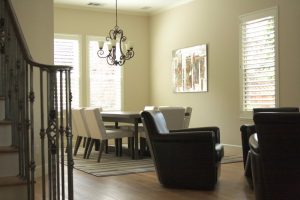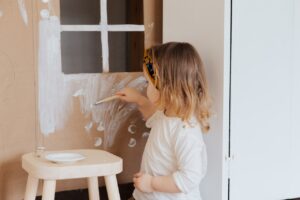
What’s the Best House Painter for Pleasant Hill, California?
About Pleasant Hill, California and Top Reasons to Hire a Professional House Painter Pleasant Hill is a city in Contra Costa County, California, in the San Francisco Bay Area’s East Bay. At the time of the 2020 census, the population was 34,613. It was founded in 1961. Pleasant Hill is home to College Park High School, Diablo Valley College, the Contra Costa County Library system’s Pleasant Hill Library, and the Pleasant Hill Recreation & Park District. When it comes to revitalizing your home’s exterior or adding a fresh coat of paint to its interiors, hiring a professional house painter can make a world of difference. In this article, we will delve into the allure of Pleasant Hill, California, and explore the top reasons why enlisting the expertise of a professional house painter is a wise investment. Preserving Pleasant Hill’s Aesthetic Appeal Hiring a professional house painter ensures that the beauty and integrity of Pleasant Hill’s diverse architectural styles are preserved. Quality Workmanship that Stands the Test of Time Professional painters possess years of experience and extensive knowledge in surface preparation, paint selection, and flawless execution. Their meticulous attention to detail and skilled craftsmanship ensure a finished result that is not only visually stunning but also durable and long-lasting. Time and Cost Efficiency By hiring a professional house painter in Pleasant Hill, you can save valuable time and energy. These experts are equipped with the necessary tools, techniques, and resources to efficiently complete the painting project, allowing you to focus on other aspects of your life. Stress-Free Experience These professionals take care of all the aspects of the project, from sourcing materials to cleaning up afterward, ensuring a hassle-free experience for homeowners. Sit back, relax, and let the experts transform your house into a work of art while you enjoy peace of mind. Value Addition to Your Home A freshly painted exterior not only enhances the aesthetics but also provides an added layer of protection against the elements, safeguarding your investment. Your home deserves the best, and so do you. Don’t wait any longer—take action now and let the professionals work their magic. Experience the transformative power of professional house painting in Pleasant Hill and enjoy a home that radiates beauty, durability, and unmatched appeal. https://youtu.be/xLb1H_qs4Rghttps://youtu.be/OHlfgOIajaM Why Visit Pleasant Hill? Top 3 Hotels in Pleasant Hill, California Nestled in the picturesque landscapes of California’s Bay Area, Pleasant Hill is a hidden gem that offers a delightful blend of natural beauty, cultural attractions, and warm hospitality. Whether you’re seeking a peaceful retreat or an exciting adventure, this charming city has something to offer every traveler. And when it comes to finding the perfect place to stay, Pleasant Hill boasts an array of top-notch hotels that cater to all your needs. Here, we present the top three hotels in Pleasant Hill that are sure to make your visit an unforgettable experience. 1. Hyatt House Pleasant Hill Hyatt House Pleasant Hill is a premier hotel that offers guests a comfortable and convenient stay. With its spacious suites, modern amenities, and prime location, it is an ideal choice for both business and leisure travelers. Whether you’re visiting for a short getaway or an extended stay, Hyatt House Pleasant Hill ensures a memorable experience. It is just minutes away from popular attractions such as Six Flags Hurricane Harbor Concord, the Waterworld California water park, and the charming downtown areas of Pleasant Hill and Walnut Creek. Hyatt House Pleasant Hill offers a range of spacious suites that provide a relaxing home-away-from-home ambiance. The suites are thoughtfully designed with separate living areas, fully equipped kitchens, and comfortable bedrooms, making them perfect for families, business travelers, and anyone seeking extra space and convenience. The hotel offers a variety of amenities, including a 24-hour fitness center, an outdoor pool, and a hot tub. Whether you want to stay active or unwind after a long day, these facilities cater to your needs. For those traveling for business, the hotel also provides a 24-hour business center and flexible meeting spaces to accommodate corporate events or conferences. Hyatt House Pleasant Hill understands the importance of starting the day right, which is why they offer a complimentary breakfast for all guests. From freshly baked pastries and fruit to made-to-order omelets and waffles, the breakfast spread caters to different tastes and dietary preferences. In the evening, guests can unwind at the H Bar, which serves a selection of craft cocktails, beers, and wines, along with a variety of delicious snacks and light bites. One aspect that sets Hyatt House Pleasant Hill apart is its commitment to providing exceptional service. The hotel’s friendly and attentive staff is dedicated to ensuring that every guest’s needs are met. Whether you need assistance with travel arrangements, local recommendations, or any other request, the team at Hyatt House Pleasant Hill is always ready to assist with a warm and welcoming attitude. Whether you’re exploring the Bay Area’s attractions or simply seeking a relaxing getaway, Hyatt House Pleasant Hill ensures a memorable and enjoyable experience. View this post on Instagram A post shared by Hyatt House Pleasant Hill (@hyatthousepleasant_hill) View this post on Instagram A post shared by Hyatt House Pleasant Hill (@hyatthousepleasant_hill) 2. Residence Inn Pleasant Hill Concord When it comes to finding a home away from home during your extended stay in Pleasant Hill, California, Residence Inn Pleasant Hill Concord stands out as an exceptional choice. Boasting a prime location, spacious suites, and a host of amenities, this upscale hotel offers a comfortable and convenient experience for both business and leisure travelers. Let’s delve into the features that make Residence Inn Pleasant Hill Concord an ideal choice for your extended stay needs. Conveniently situated in the heart of Pleasant Hill, Residence Inn benefits from its proximity to major highways, making it easily accessible for travelers. The hotel’s location also offers convenient access to nearby attractions, shopping centers, restaurants, and corporate offices, ensuring that guests have everything they need within reach. Residence Inn Pleasant Hill Concord offers a range









